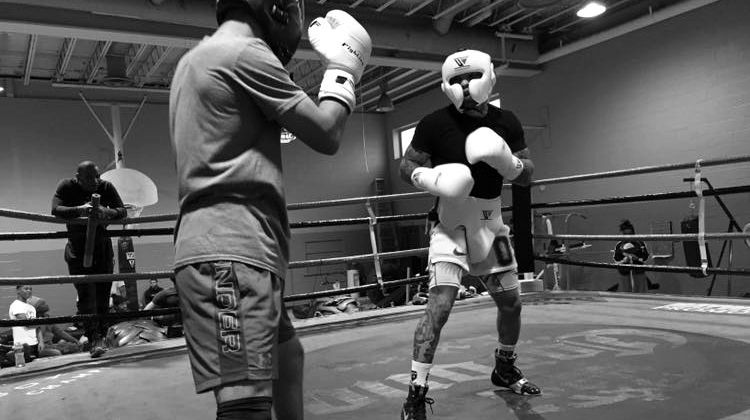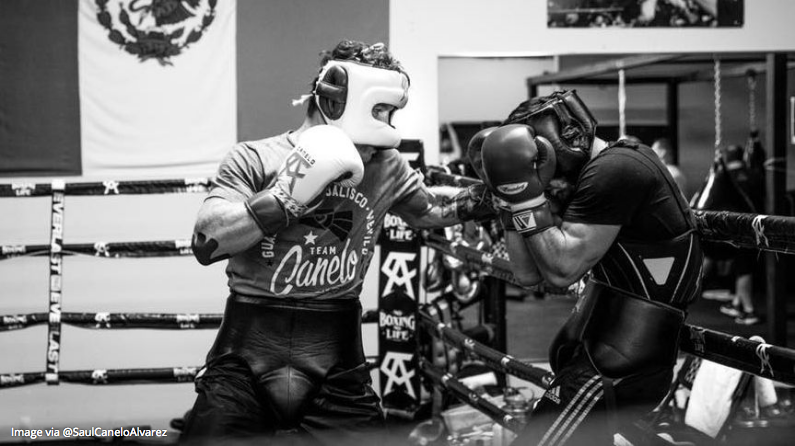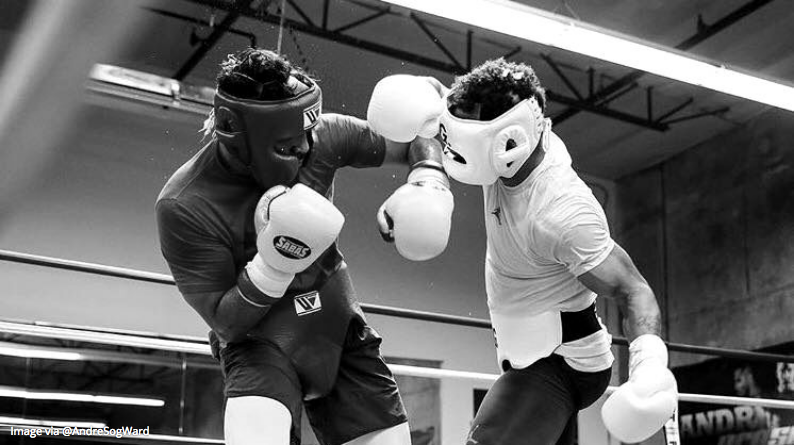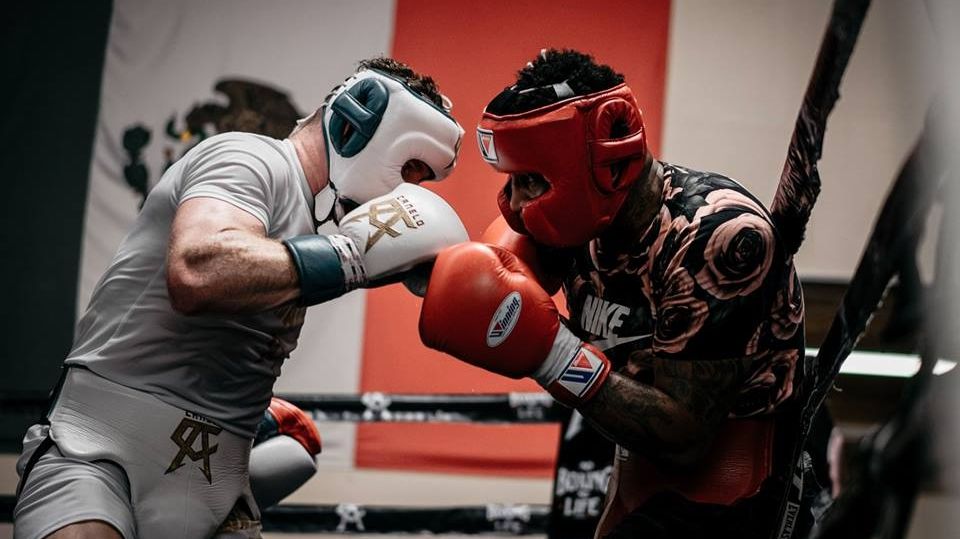“Float like a butterfly, sting like a bee.” – Muhammad Ali
If ever there was an expression and an example to emphasize the importance of good footwork in boxing, it is this.
Footwork is arguably the most overlooked aspect of what it takes to be a great boxer. From as far back as Sugar Ray Robinson to a consummate technician like Vasyl Lomachenko, fighters with superb footwork have often enjoyed a great advantage over their flat-footed counterparts.
Interesting fact: both Sugar Ray and Lomachenko had dancing lessons when they were younger.
Aside from looking slick under the spotlight, flashy antics from the likes of Naseem Hamed also did much to frustrate and confuse opponents. Good footwork can do more than that; it can win fights from the outside while absorbing minimal damage. After all, why even bother taking shots when you can get far enough out of range that your opponent ends up punching thin air?
Moreover, footwork can also help you offensively: everything from closing the gap, slipping punches and setting up clever angles relies on footwork.
There are a number of ways you can develop your movements so that they are fast and effective. However, there are some things you should be mindful of as they may cause you problems further down the line. There are some key factors that will help you literally to run rings around your opponent, as was the case in 1946 when, legend has it, Willie Pep won a round against Jackie Graves with just his jab and footwork.
Let’s break it down:
1) Correct Form
The first thing to remember is to stay on your toes.
You are more mobile on the balls of your feet, which gives you the ability to spring effortlessly in and out of the danger zone. It is important to move laterally as much as possible to avoid ending up on the ropes when your opponent tries to close the gap. You don’t need to be miles away from your opponent, just far enough so that you are out of reach but close enough to fire back with a counter punch.
With slick footwork, you will be able to save your power shots and wait for better openings. When this happens, it is time to get off your toes and plant your feet. Planting your feet when you throw hooks and crosses will provide maximum power and help you to keep your balance. Also, try to keep a straight back as much as possible to maintain your center of gravity.
When you move, try to take quick, small steps instead of big lunges, as small steps will help you to maintain ideal form. Also, try to make a conscious effort not to drag your feet, which will waste valuable speed and energy. As a general rule, you should avoid crossing your legs at any point; backpedaling and doing the Ali shuffle may look cool – but if you get tagged while your legs are close together – you will almost certainly go down or at least be knocked severely off balance.
2) Closing the Gap
Stepping in and out is another important footwork skill to master.
If your opponent has quick reflexes, mix it up and throw slips in with your jabs, and pivot out after combinations. The important thing to remember when you step jab is that your feet and punches should move in unison. Try jabbing with the left as your left foot lands and following it up with a right cross as your right foot lands. This will help you pop back out before your opponent has a chance to respond, frustrating him or her in the process.
Another thing to remember is to maintain a traditional boxer’s stance: it is the way it is for a reason. By keeping your feet just past shoulder width apart, you are well squared and set to make the required movements. Yes, there are fighters such as Floyd Mayweather who sometimes use a wide stance to load up on their rear leg while evading a punch, but generally, shoulder width apart is the rule. Keeping a slight bend in the knees, the lower you dip, the slower you will be.
3) Creating Angles
An often overlooked benefit to having great footwork is the superior angles you can create.
Marvin Hagler, for example, was a natural southpaw who liked to throw a jab and step on the outside of his opponent and then attack from the side in an orthodox stance. Mike Tyson would sometimes do something similar when he had an opponent on the ropes, going from orthodox to southpaw to cut an angle to his opponent’s side before delivering brutal hooks and uppercuts.
Today, nobody does it better than Lomachenko, yet there is a caveat that should be considered, and that is that Vasyl is a southpaw. Being in the opposite stance to opponents presents fighters with the opportunity to get their lead foot on the outside, allowing them to pivot to a side angle.
Keep in mind also that Loma tends to initiate a lot of his footwork angles while distracting his opponent with jabs, crosses, and hooks.
Additional Tips
There are several small steps you can take today that will speed up the learning process tenfold.
Unless you already own a pair, the first thing on your to-do list should be to get a set of boxing boots, preferably high top ones. A decent pair of boxing boots will support your ankles, help you distribute your balance and allow you to pivot while also providing enough traction so that your feet don’t slip as you move around.
It is highly recommended that you spend at least half an hour a day shadow boxing, preferably in front of a mirror so you can keep an eye on your form. Square tiled flooring is a good way to check if your feet are in the correct position when you pivot 90 degrees, ensuring you are in the true boxer’s stance when the movement is completed.
Above all, stay relaxed and drill with a partner using focus pads. From here on, put your skills to the test in sparring.
Here’s Why Footwork Is Vital In Boxing

The Evolve Vacation Training Program offers travelers the extraordinary opportunity of a lifetime to train under the largest collection of World Champions on the planet and to explore the hidden treasures of one of the most incredible cities in Asia. Through this very unique program, we have redefined the meaning of “vacation” by creating a truly inspirational, life-changing experience for all overseas visitors from around the world. In addition to the traditional vacation sightseeing, relaxation, beach activities, and cultural exploration, we offer travelers the rare opportunity to train martial arts alongside the Evolve Fight Team, Asia’s most decorated professional fight team, as well as the legendary, world-renowned Evolve Instructor Team.























